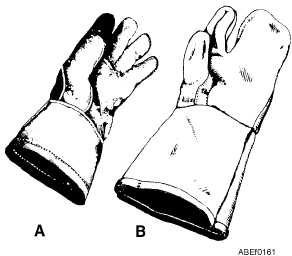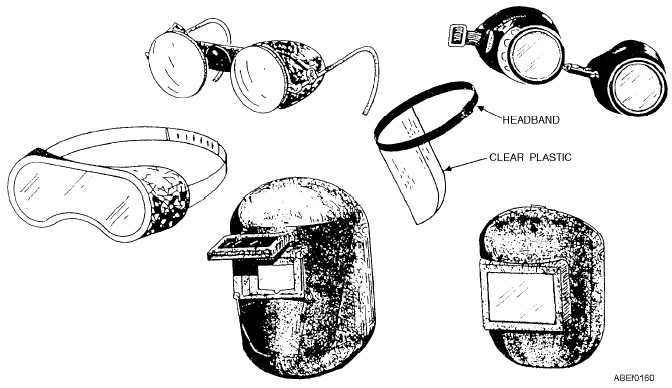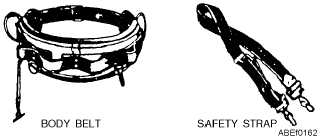shape) on the body belt. When you are at working
position, you unsnap one end of the safety strap, pass it
around the supporting structure so there is no danger of
its slipping (at least 18 inches from the top of the part on
which it is fastened), and hook it to the right D-ring on
the body belt.
The safety strap must be placed around a part of the
structure that is of sufficient strength to sustain an ABs
weight and his or her equipment, and must rest flat
against the surface without twists or turns. It must not
be placed around any part of a structure that is being
removed.
Before placing your weight on the strap, determine
VISUALLY that the snap and D-ring are properly
engaged. Do not rely on the click of the snap-tongue as
an indication that the fastening is secure.
The body belt and safety strap require inspection
before use. Look for loose or broken rivets; cracks,
cuts, nicks, tears or wear in leather; broken or otherwise
defective buckles, such as enlarged tongue-holes,
defects in safety-belt snap hooks and body belt D-rings.
If you discover any of these or other defects, turn in
your equipment and replace it.
Perform maintenance periodically according to
applicable procedures. Remember that leather and
nylon belts are treated in different manners.
1-3
Figure 1-2.—Gas and electric-arc welding gloves.
Figure 1-1.—Eye-protection devices.
Figure 1-3.—Safety equipment.






